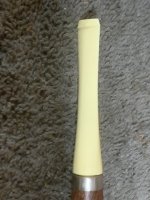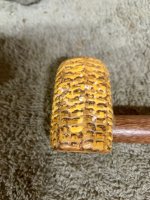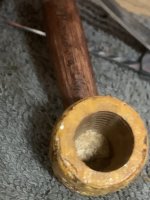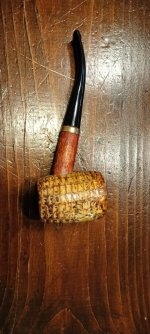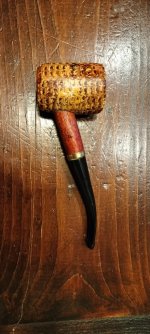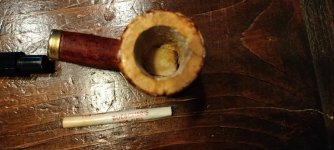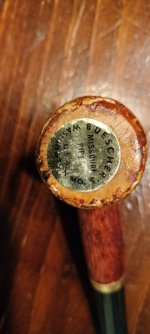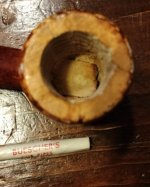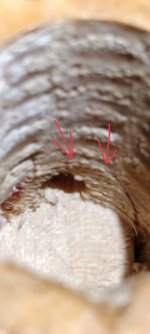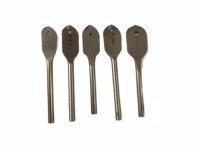Buesher’s World Famous Pipes was one of over a dozen major Washington Missouri competitors of the Original Missouri Meerschaum that survived until fairly modern times only to merge or be bought out by Missouri Meerschaum.
They were all making essentially the same article, and it seems Buesher’s used walnut stained hickory shanks and ivory colored stems to set them apart from the others. Note the absence of a protective dowel extending into the bowl.
$10
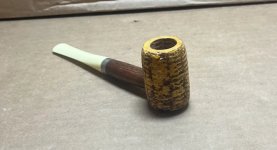
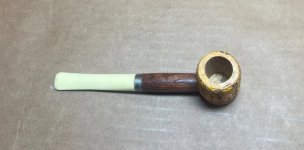
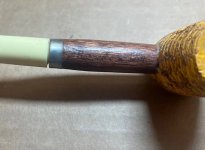
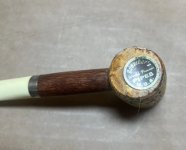
The shank is printed Boonsboro Ky.

 en.m.wikipedia.org
en.m.wikipedia.org
There was a time trinket and souvenir shops could get their store name or a town name if they made a certain size order of pipes.
That might still be true today.
They were all making essentially the same article, and it seems Buesher’s used walnut stained hickory shanks and ivory colored stems to set them apart from the others. Note the absence of a protective dowel extending into the bowl.
$10




The shank is printed Boonsboro Ky.

Boonesborough, Kentucky - Wikipedia
There was a time trinket and souvenir shops could get their store name or a town name if they made a certain size order of pipes.
That might still be true today.
Last edited:







